Mantua rediscovers one of its masterpieces: the ceiling of the famous Chamber of Cupid and Psyche in Palazzo Te. The impressive pictorial cycle, the work of Giulio Romano and his workshop, created between 1526 and 1528, has been the subject of an extensive conservation restoration campaign. The intervention has brought back to light the full vitality of the painting, while offering new discoveries and significant perspectives for future studies.
This meticulous work of recovery and protection, which stands as a masterpiece of Italian Mannerism, has received the financial support of the Giulio and Giovanna Sacchetti Onlus Foundation, an entity that stands out for its activities in favor of the preservation of historical, cultural and artistic heritage. The restoration initiative was specifically promoted by the Fondazione Palazzo Te and is part of a broader context of initiatives related to the Cinquecentenario, as well as part of the more extensive programmed conservation project involving the entire Palazzo Te complex.
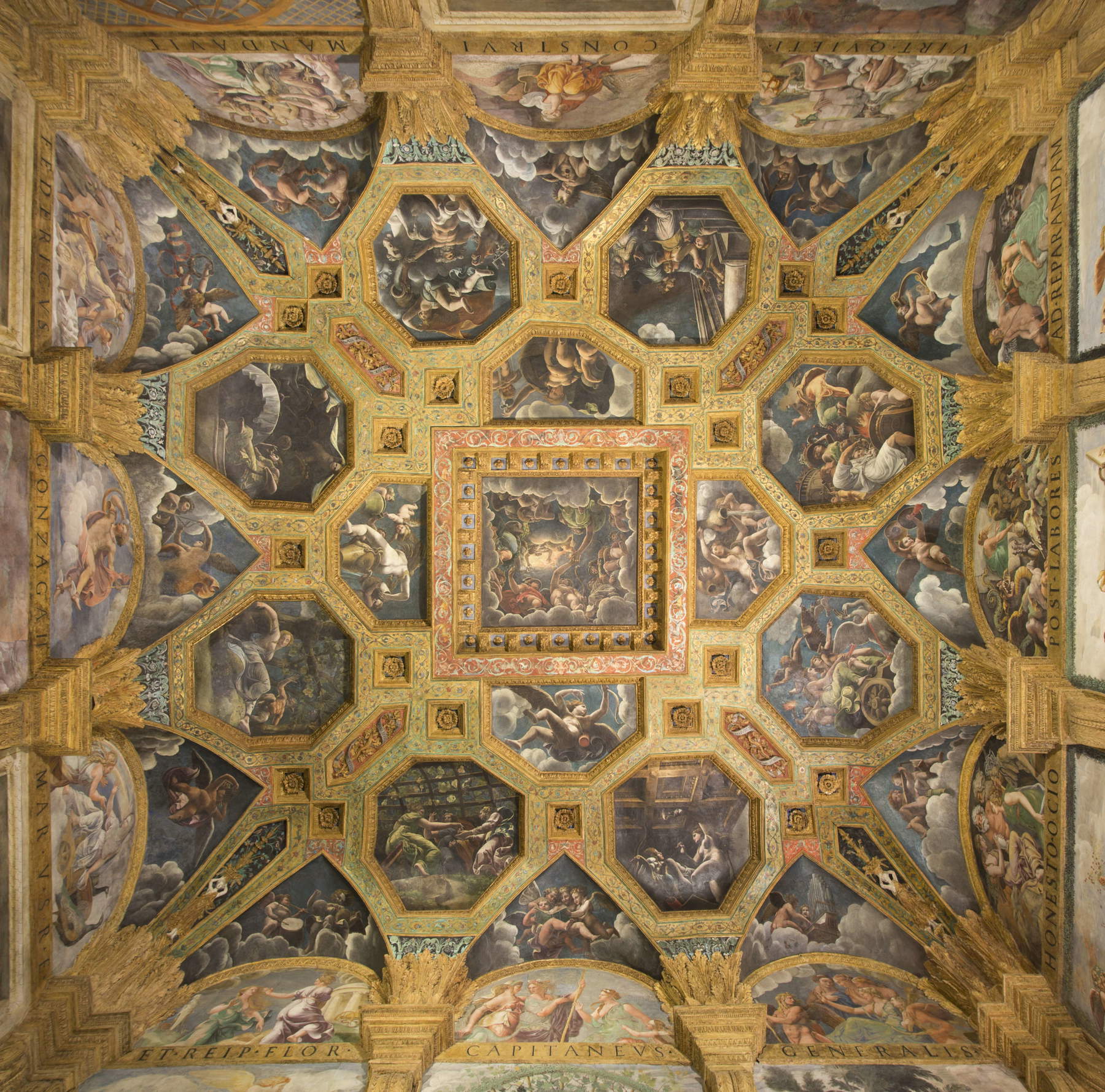
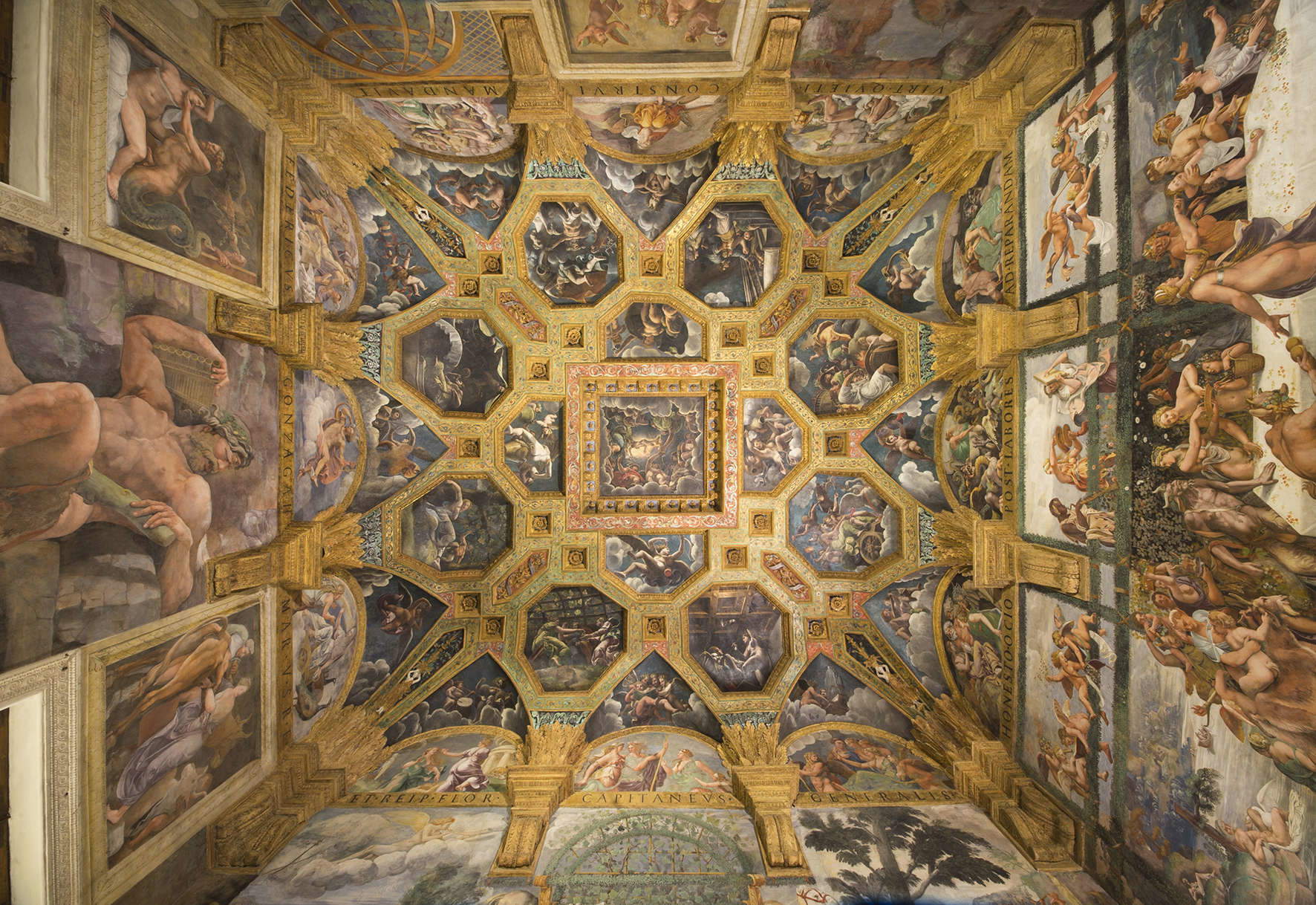
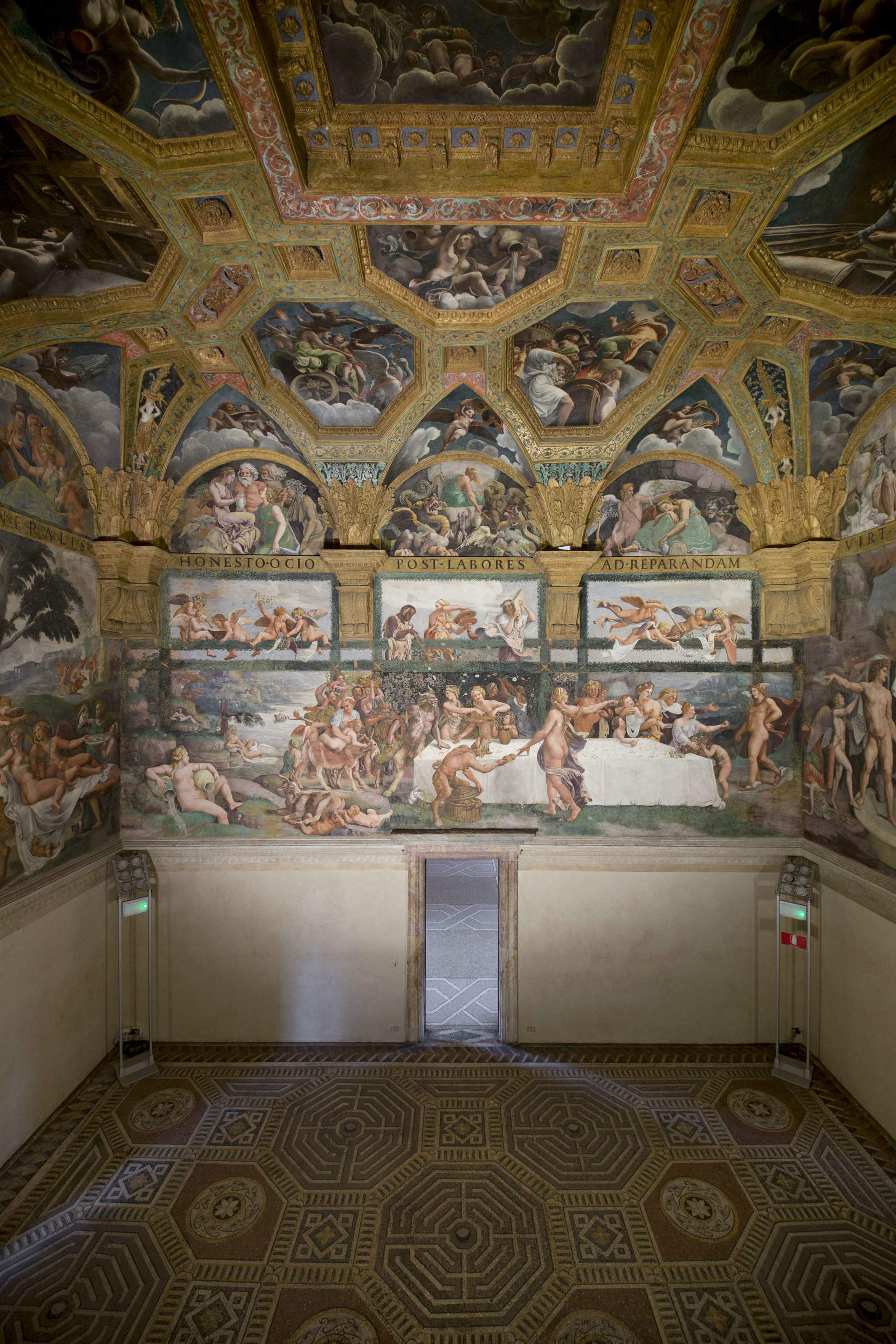
The Chamber of Cupid and Psyche is universally recognized as the most sumptuous room in the entire Palazzo Te, by virtue of the richness and exceptional value of its decorations. The room owes its name to the famous Tale of Cupid and Psyche, the narration of which was taken from Apuleius’ The Metamorphoses. The complex story is told through the decorations, unfolding in a nonlinear manner both on the vault and in the lunettes: the apotheosis of the tale, the climax of the narrative, is represented in the central panel of the ceiling, depicting the union in marriage of Psyche and Cupid at the hands of Jupiter.
The work that has just been completed stands in continuity with a previous conservative restoration work dating back to 1989, carried out at the time by the Central Institute for Restoration. The scope of the intervention was remarkably complex, having involved different and specific types of decorative surfaces that make up the vault. Specifically, the restorers focused on the oil paintings that narrate scenes from the story of Cupid and Psyche. They also worked on the coffered structure, characterized by the presence of plant elements that were predominantly painted on a pre-existing base of gilded foil. Finally, they treated both the stucco modeling, enriched with female figures and salamanders, and the frescoed wall paintings found in the lunettes along the perimeter walls of the hall.
In addition to the tangible result of having restored visual splendor to one of the most significant creations attributed to Giulio Romano, the entire conservation operation has proved to be a crucial opportunity for study and research for specialists in the field. Indeed, this work has opened the possibility of deepening the understanding of the painting techniques characteristic of the Renaissance. In parallel, it has provided a basis for the development of innovative methodologies intended for the conservation of cultural heritage in general.
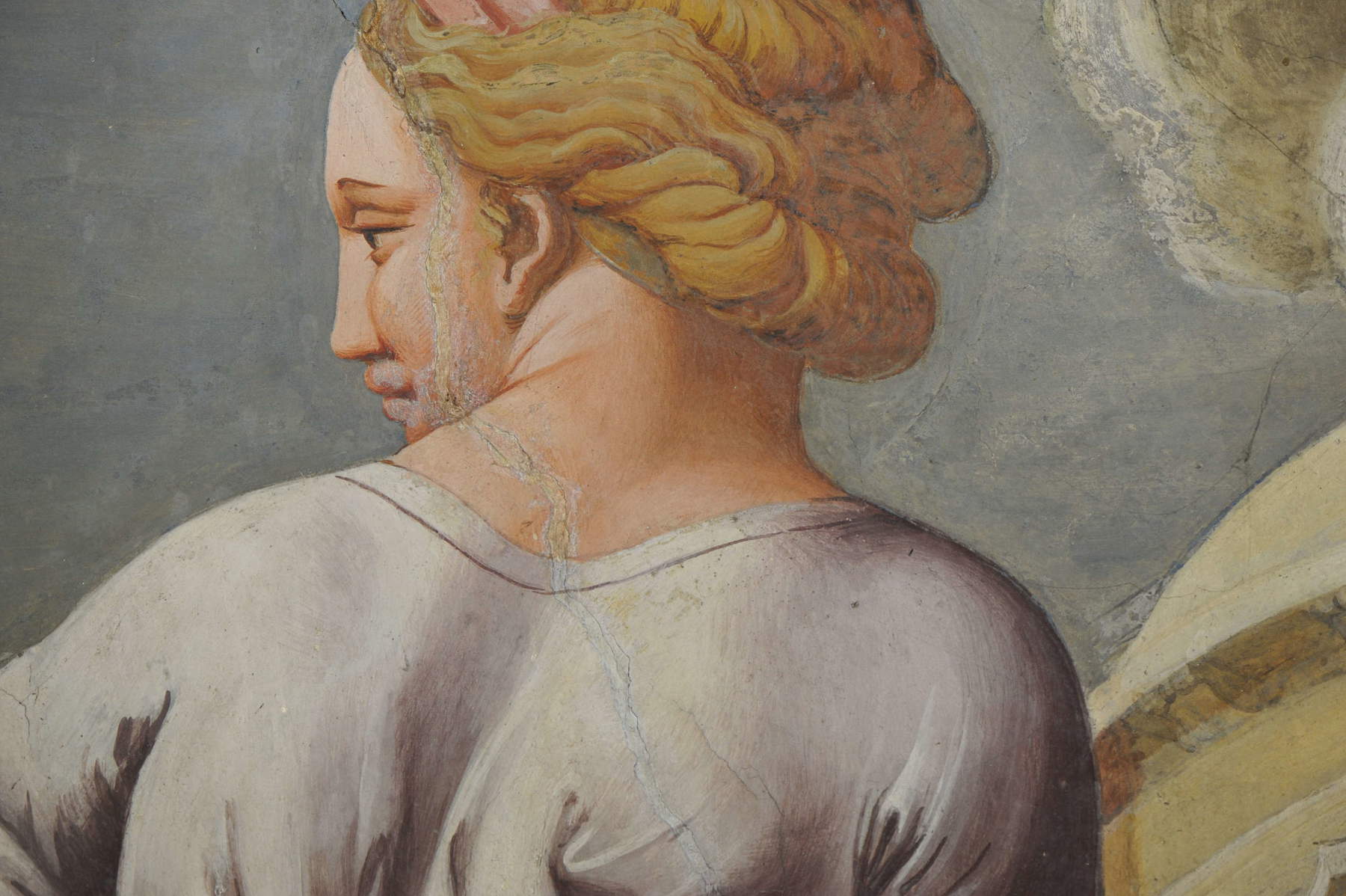

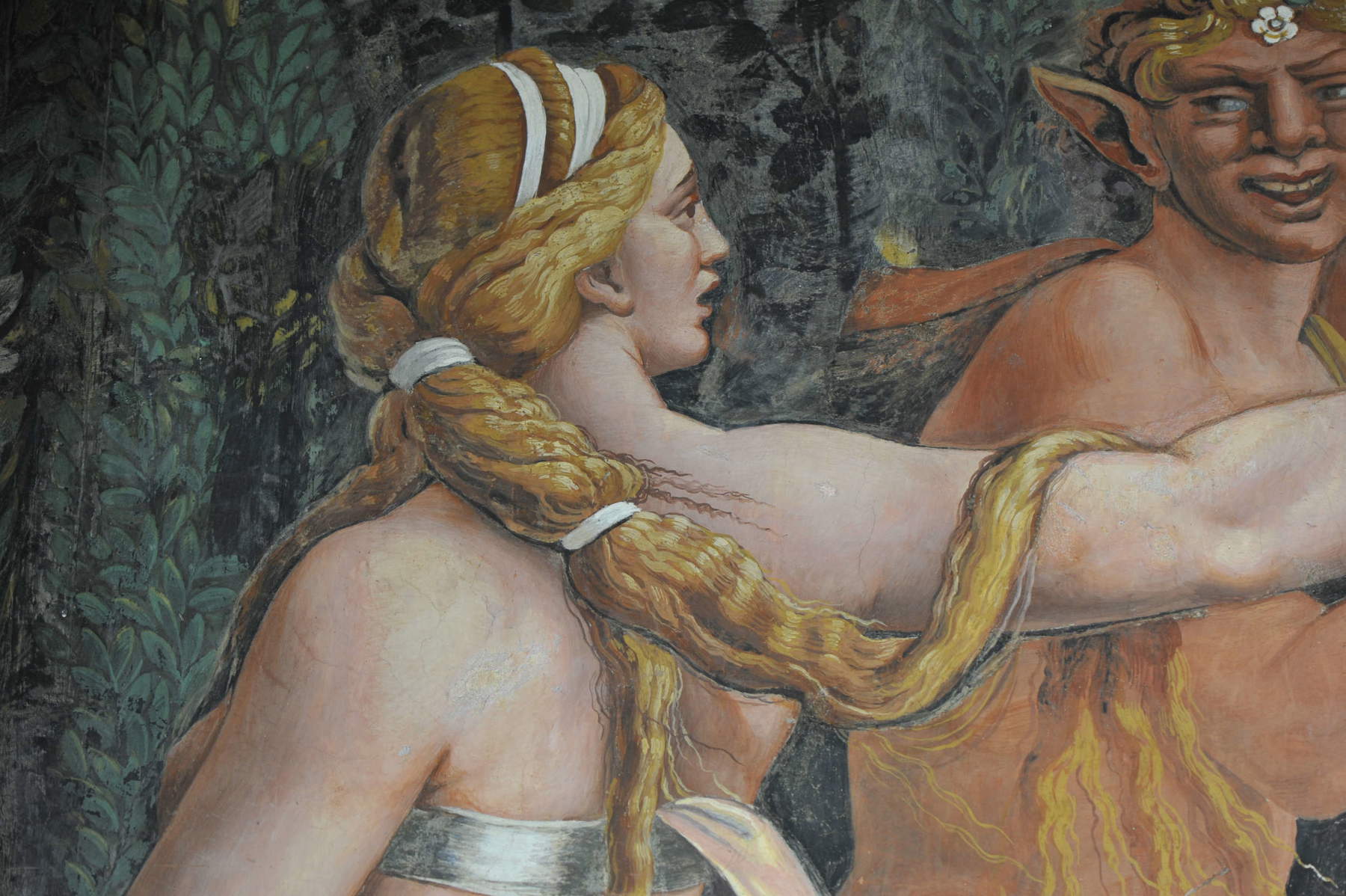
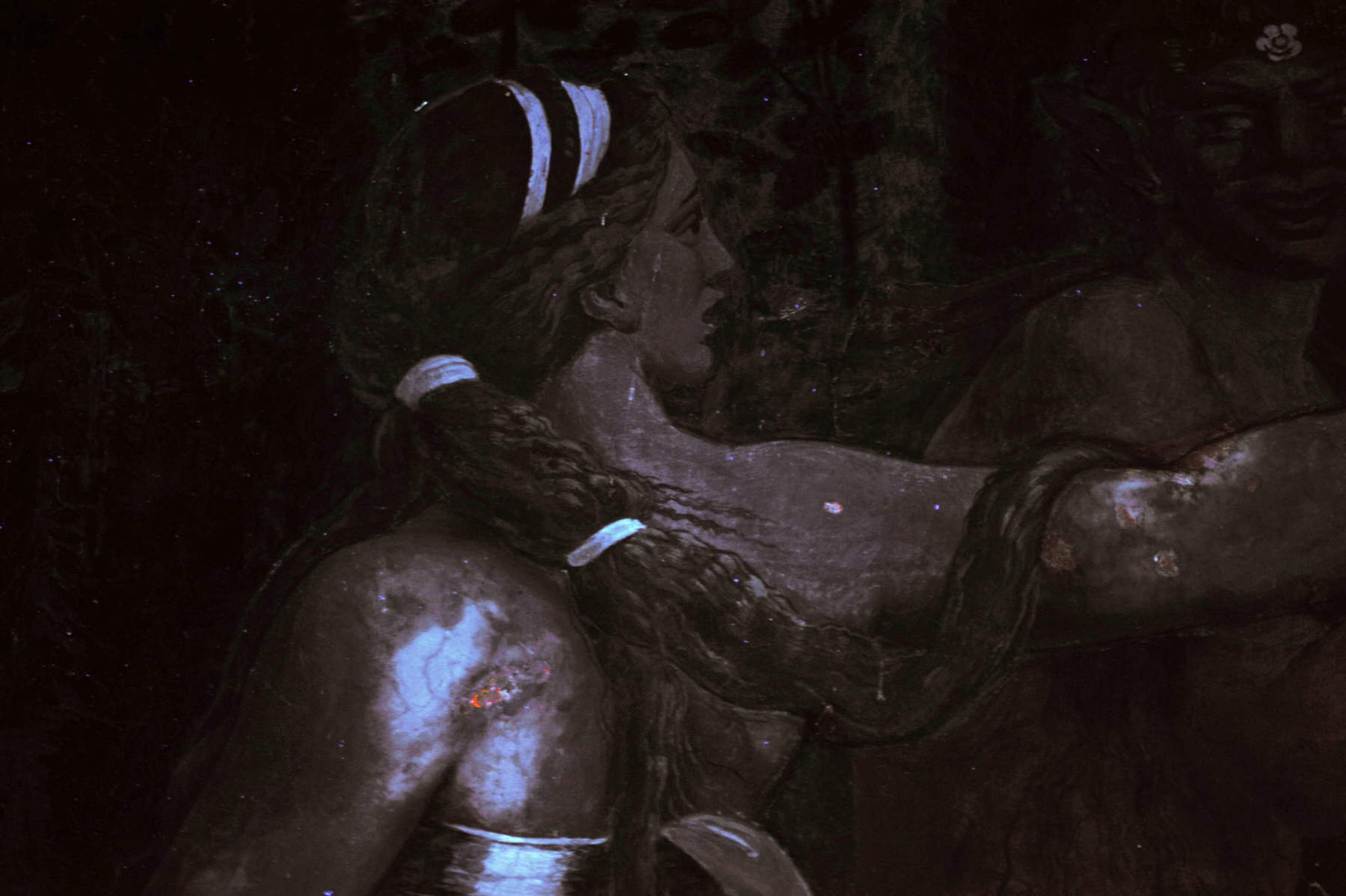
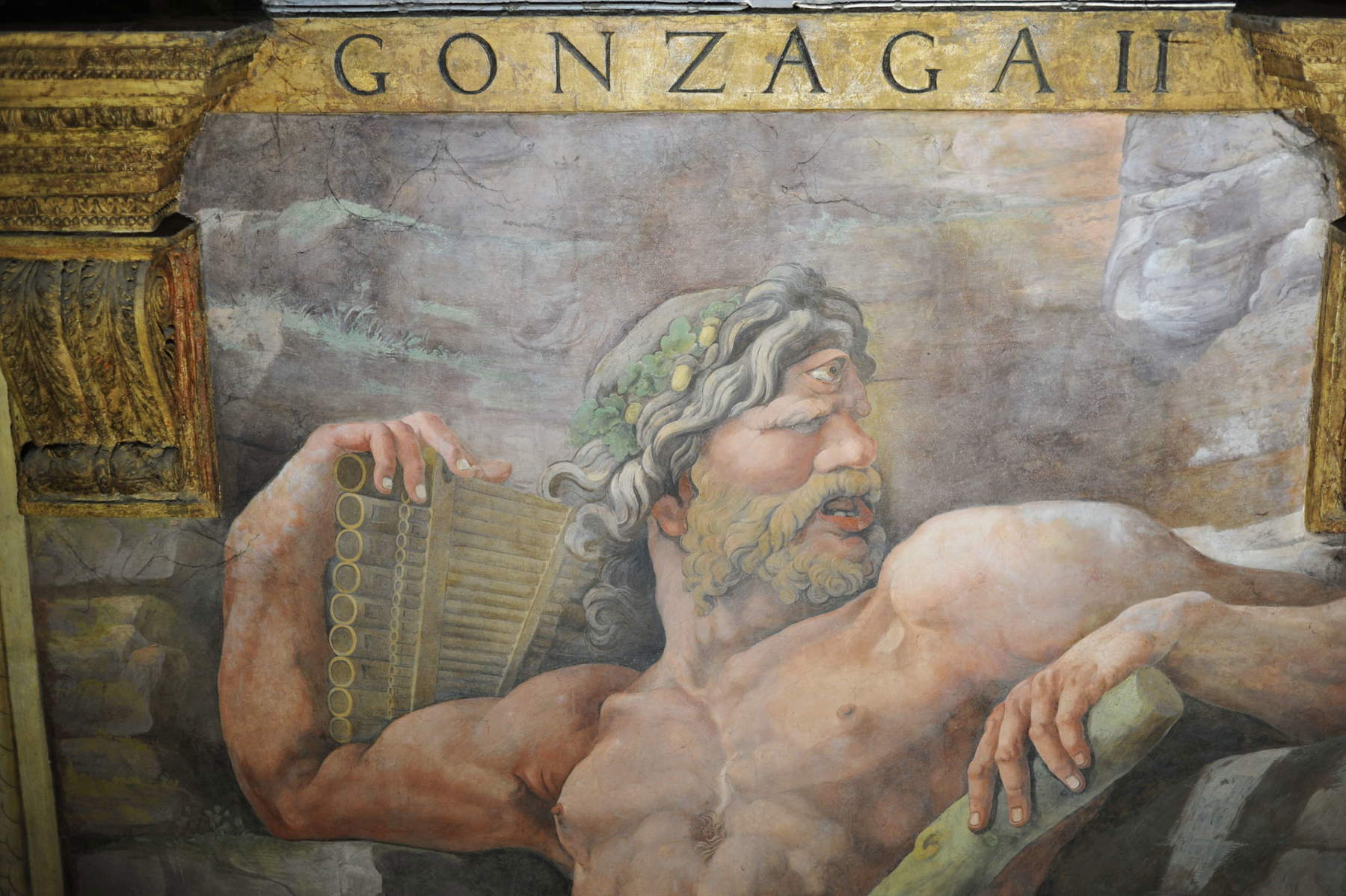
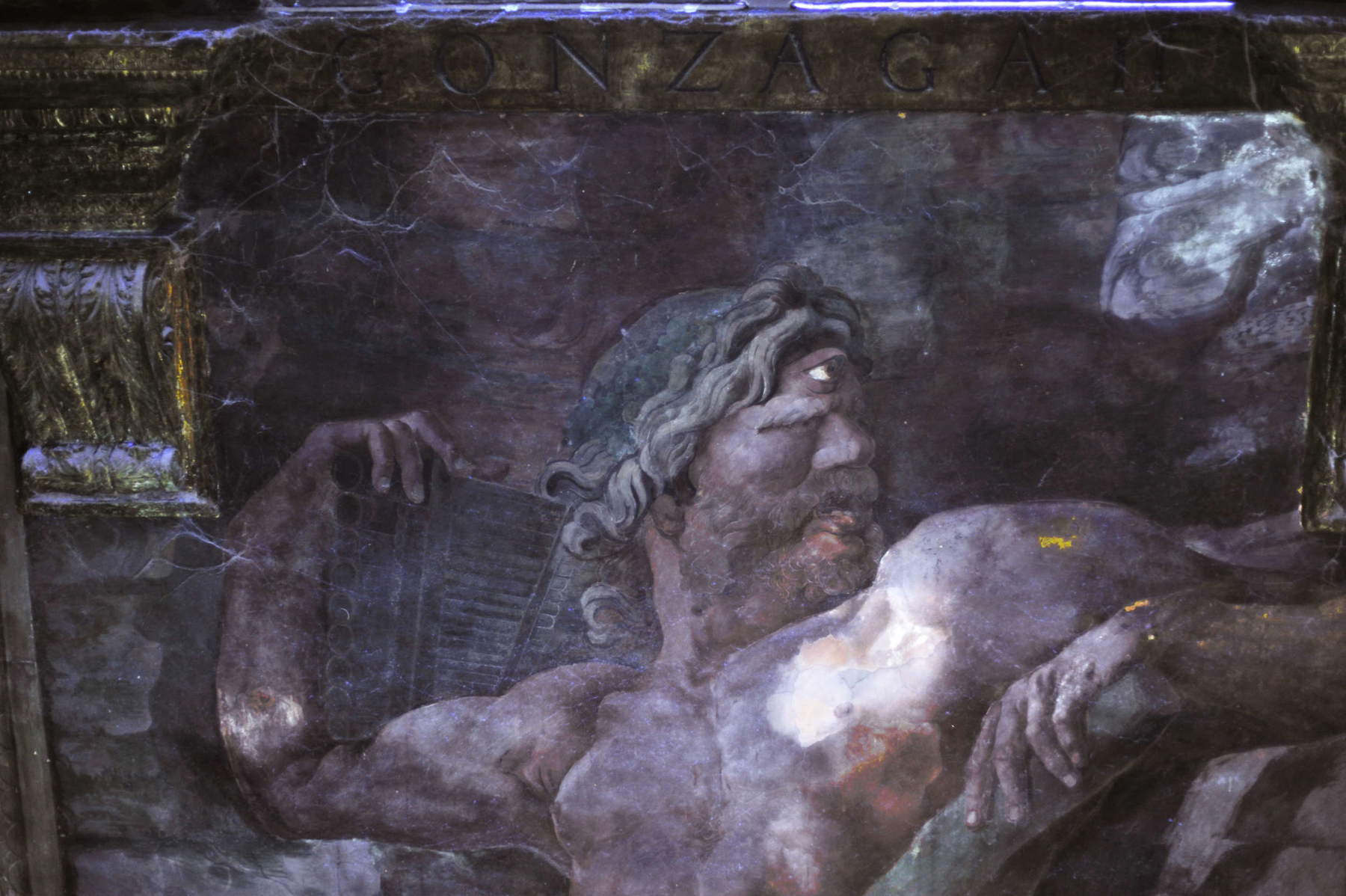
In support of the conservation restoration work, a campaign of non-invasive diagnostic investigations was conducted, based on multispectral techniques, aimed at studying the work, analyzing degradation phenomena and identifying the materials used in previous restorations. The investigations were carried out in July by Studio KOS art investigation, in a preliminary phase to the actual intervention, immediately after the initial operations of suction and surface dusting. The operational approach adopted favored, where compatible, a methodological and material continuity with the previous intervention carried out in 1989 by the Central Institute for Restoration, the results of which proved to be still functional and effective, considering the intervening time.
A key step in the project was represented by the multispectral survey campaign, conducted by experts Vincenzo Gheroldi and Sara Marazzani. These investigations made it possible to collect additional and crucial data not only on the restoration interventions carried out previously, identifying the stratifications of the materials used, but also on the degradation phenomena that are currently taking place on the work. The information thus obtained proved essential for the development of accurate vulnerability maps. The technical study, by delving into the dynamic interaction between the original pictorial materials and the subsequent restorations, has precisely oriented the maintenance strategies toward a conservation approach that is focused and fully sustainable in the long term.
The executive restoration work, entrusted to Marica Negri and Isotta Lorenzini, took place over three months. This intensive activity provided the unique opportunity to observe very closely every single detail of the painting. Such close observation confirmed a great vitality intrinsic to the work, allowing to distinguish, in some scenes, the passage of several artists and even the existence of corrections made by Giulio Romano or his workshop in the course of execution.
At a preliminary stage, the pictorial surfaces and stucco modeling were subjected to removal of inconsistent particulate matter by controlled suction, using an adjustable power vacuum cleaner. On the lunettes, the presence of even extensive interlayer detachments between the plaster and the masonry support, and numerous small-scale detachments between the plaster and plaster layers were detected. In particular, the intervention focused on the lunettes of the south wall, where there were masonry lesions and deep cracks, some of which had already been repaired in previous interventions. In these areas, some detached portions were already stabilized through stuccoing and punctual consolidation; the current intervention was therefore oriented to improve the filling in a homogeneous manner of the cavities between plaster and support, in order to restore the adhesion and structural continuity of the support of the decorative apparatus.
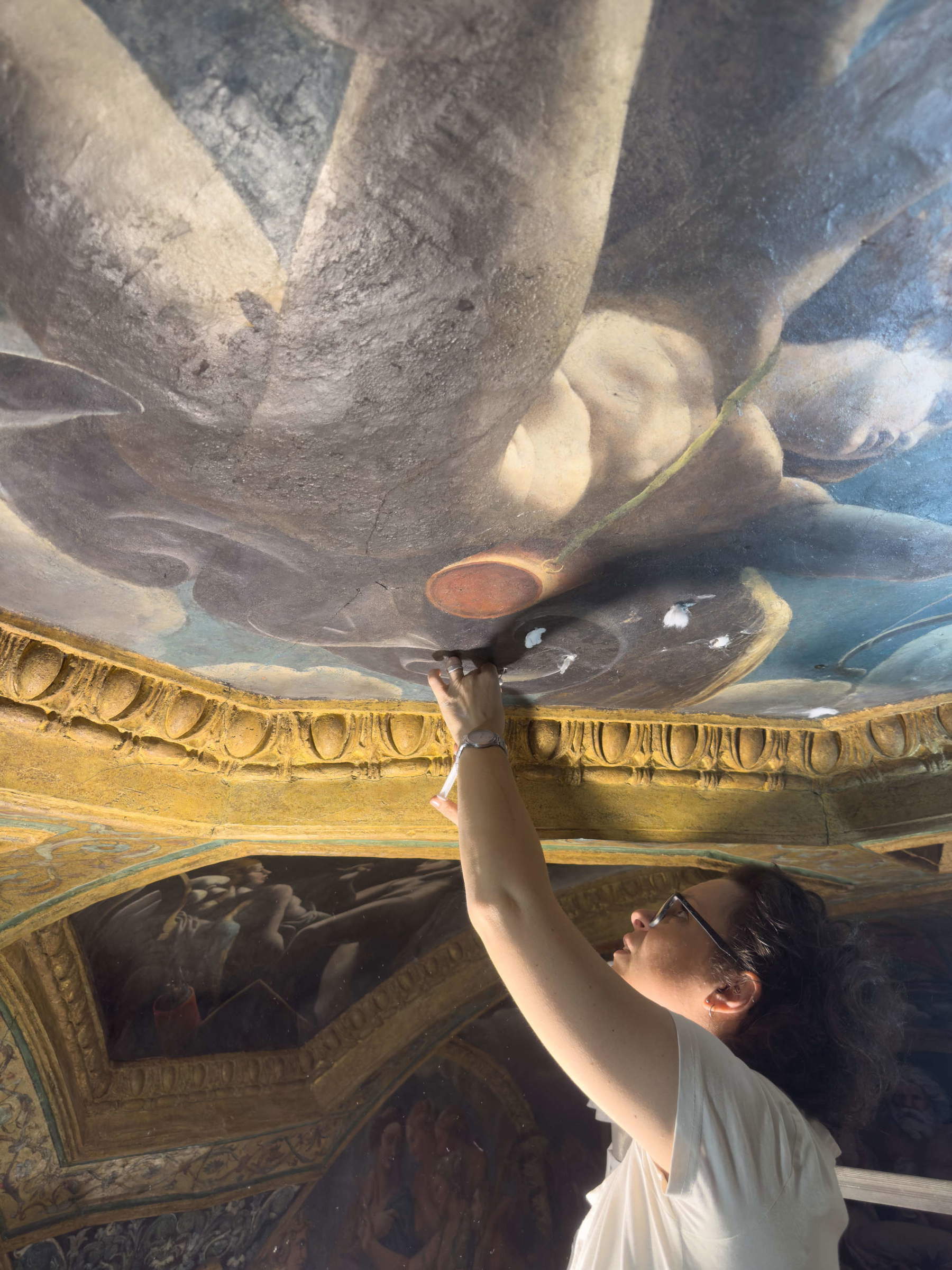
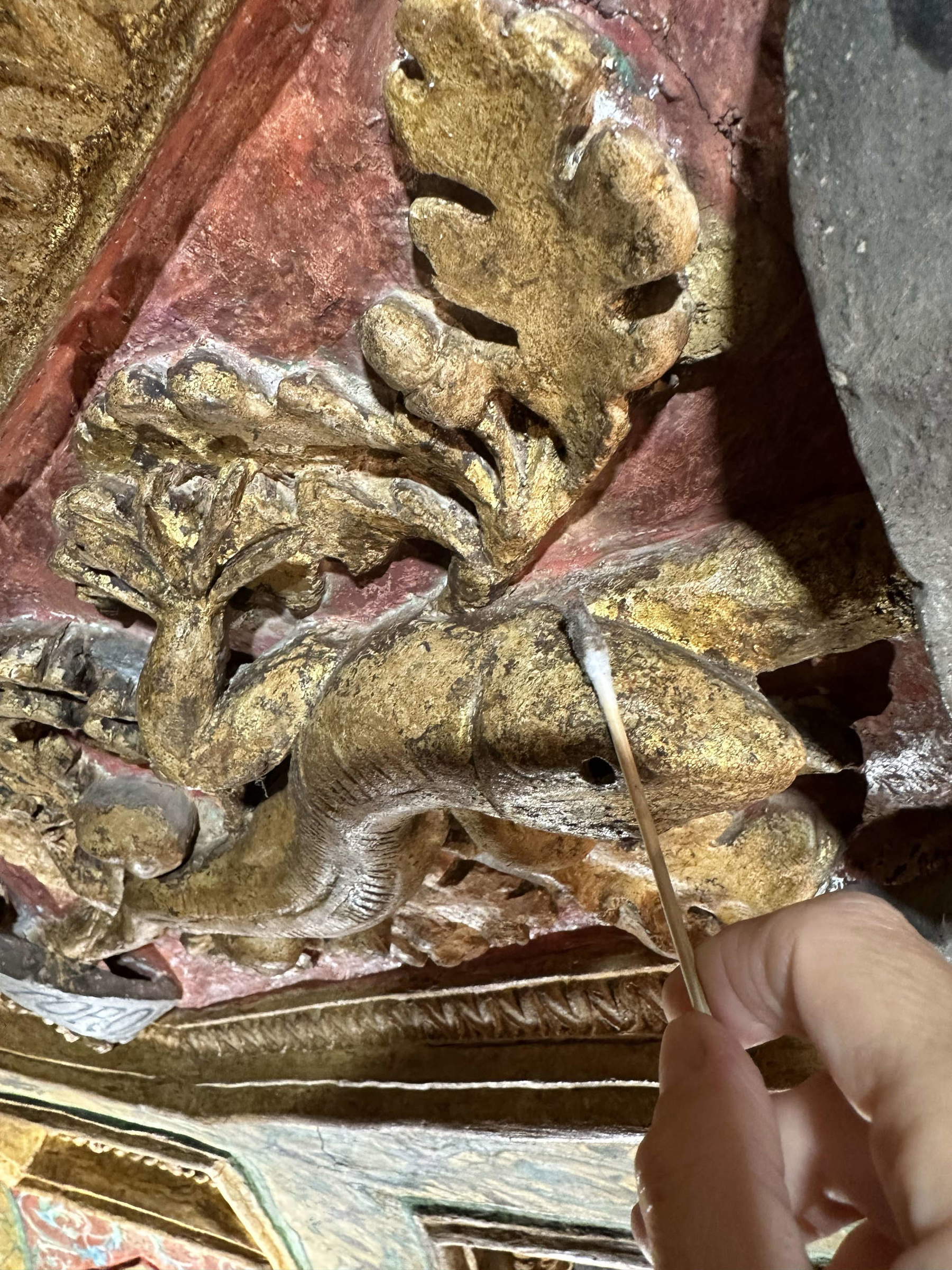
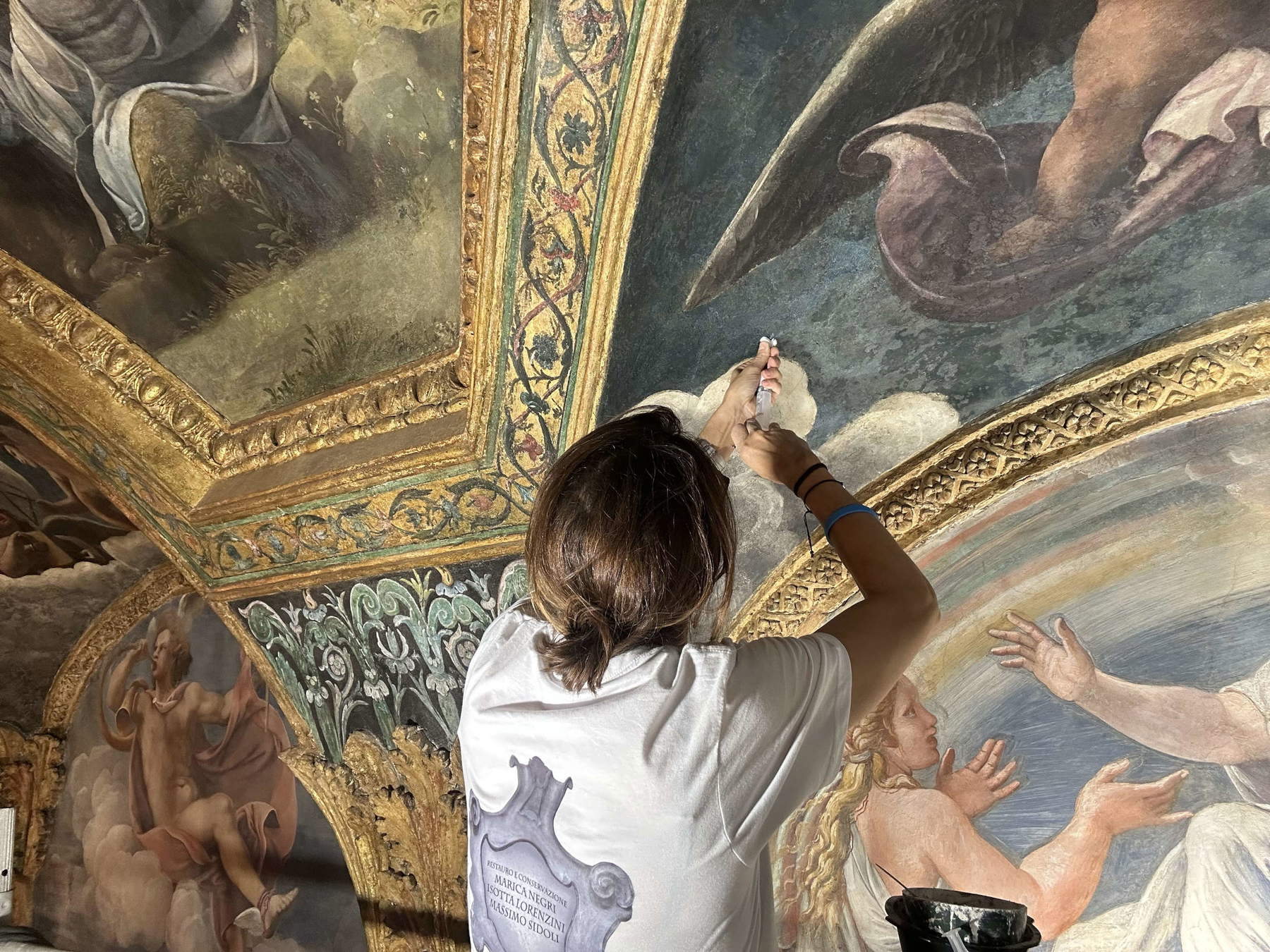
The cleaning was carried out with soft brushes of various sizes in order to remove the surface deposit. The intervention was aimed at ensuring the temporary stability of the affected areas and to allow the safe execution of subsequent injections of consolidating mortar. Pictorial reintegration involved only the filling of cracks and consolidation holes. They were pictorially supplemented with colors based on pure pigment powder and gum arabic, applied by the undertone glazing method for the smaller areas and by hatching technique for the larger areas of the crack reparations. Cracks and consolidation holes were repaired with a mortar made of lime, slaked and impalpable marble powder, spread with small spatulas of various shapes; slight overflow of material was cleaned up through dampened pads of demineralized water. Pictorial retouching The pictorial retouching carried out was limited to the areas of falling pictorial fragments and grouted areas. The additions were made with powdered pigment colors and gum arabic, applied in undertone glazes for the smaller areas and with a hatching technique for the more extensive ones (grouting of cracks).
“The conservation work on the ceiling of the Chamber of Cupid and Psyche is an important step in the Palazzo Te’s Cinquecentenario program,” says director Stefano Baia Curioni, “a project that combines the important programmed conservation plan launched by the Fondazione Palazzo Te and the expansion of the system of partnerships that the Cinquecentenario allows us to pursue. We sincerely thank all those who made it possible, starting with the Giulio and Giovanna Sacchetti Onlus Foundation, to include Diamara Parodi Delfino, and the collaborating institutions, the City of Mantua and the Soprintendenza Archeologica delle Belle Arti e del Paesaggio for the provinces of Cremona, Mantua and Lodi. This private intervention in support of the public good is a fundamental element of the ways in which our country’s culture can be regenerated.”
Fondazione Giulio e Giovanna Sacchetti Onlus has as its exclusive purpose the protection, preservation, promotion, enhancement and dissemination of historical, cultural and artistic heritage, research in the scientific field and social solidarity, through wide-ranging initiatives and projects and collaboration with public and private bodies and institutions. “Following the conservative restoration of the Chamber of Cupid and Psyche and seeing its conclusion today has been a very fulfilling experience for me,” says Giovanna Zanuso, president of the Giulio and Giovanna Sacchetti Foundation. “I would like to thank Stefano Baia Curioni very much, who made me rediscover Palazzo Te, which I had not seen for many years and which is a jewel of the city of Mantua. This is a restoration that I strongly wanted with my Foundation and I hope it will be a door to the future and open new perspectives for research and to admire this wonder, now returned to the public in all its splendor.” Visitors to Palazzo Te will now have the opportunity to fully admire the magnificence and refined sophistication of the vault’s decorations.
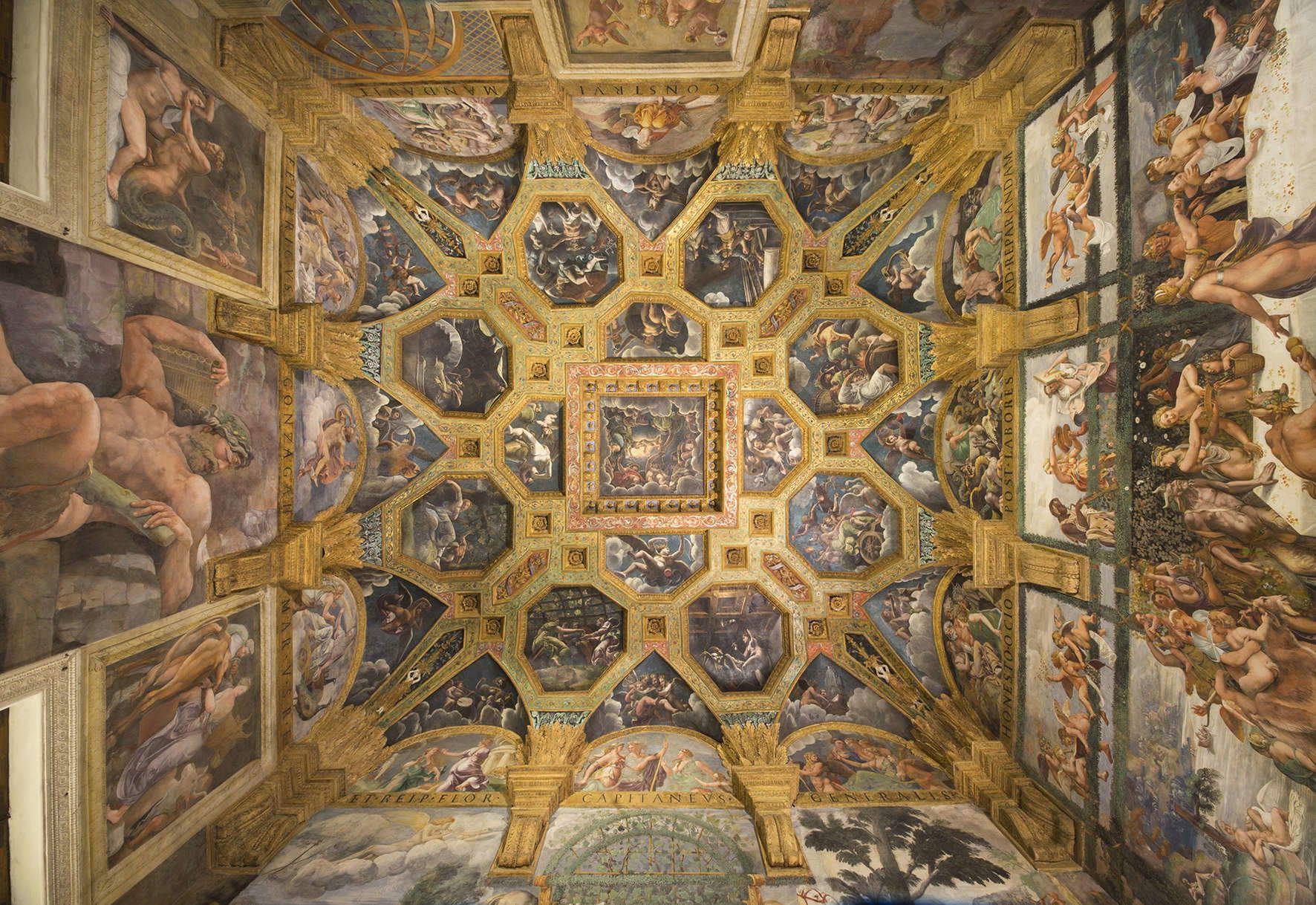 |
| Mantua, the Chamber of Cupid and Psyche shines: the masterpiece returns to view after restoration |
Warning: the translation into English of the original Italian article was created using automatic tools. We undertake to review all articles, but we do not guarantee the total absence of inaccuracies in the translation due to the program. You can find the original by clicking on the ITA button. If you find any mistake,please contact us.